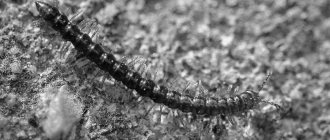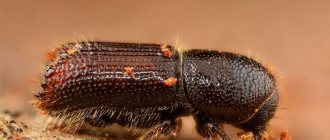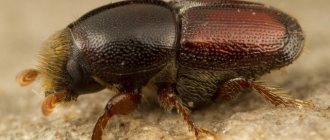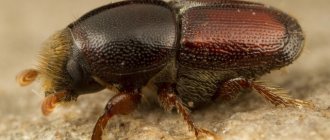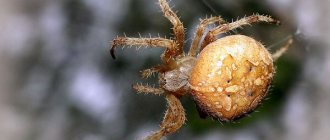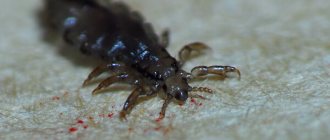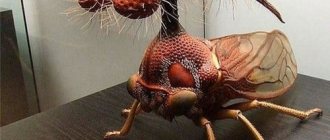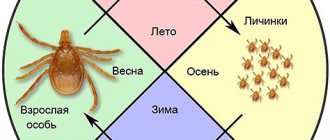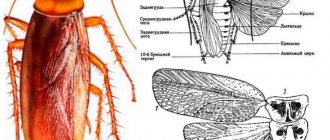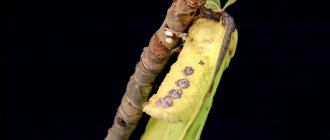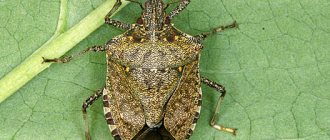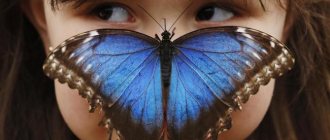Butterflies are fluttering flowers, romantic, bright and harmless insects. On the one hand, yes. But did you know that they feed on more than just nectar? Their menu includes bird droppings and even the tears of amphibians. And the worst thing is that these fragile insects know how to kill. Of course, for survival. We reveal secrets about the life of winged birds in our article.
Unusual food
In most cases, the diet of butterflies does consist of flower nectar and fruits. However, to obtain such a trace element as sodium, insects sometimes have to consume secretions from the eyes of reptiles. In addition, they do not disdain the excrement of birds and animals, and some species happily feast on half-decomposed meat.
How can you get poisoned from them?
How is it possible to develop poisoning from butterflies? Typically, most negative reactions occur as a result of touching an insect. Where is the poison found? The danger comes from hairs, growths, and wings.
Some individuals release poisonous gases, the inhalation of which can lead to negative phenomena. There are predatory butterflies that secrete a toxic liquid. If it comes into contact with the skin, negative consequences develop.
It is not recommended to touch the furry caterpillars. Insect villi can damage the skin, causing itching, blisters and serious irritation.
Poisoners
Now we will talk not only about the cruelty of lepidopterans, but also about their mental abilities. Can you imagine that sometimes to kill they use nothing more than the favorite weapon of the Middle Ages - poison. And this is not a secretion of their own body: butterflies collect poison from plants and, at the right moment, scare away predators with it.
Grape leaf roller - pest butterfly
The grape leaf roller is a butterfly with a wingspan of 18-22 mm. Its forewings are double yellow or green-gold with a brown-gray pattern, which is often blurred and sometimes absent. The hind wings are gray-brown. The egg is 1 mm in size, oval. The clutch of eggs is initially yellow-green and turns yellow before the caterpillars hatch.
Caterpillar 18-23 mm long, gray-green. The pupa is 10 mm long, first green, then acquires a brownish tint.
Overwintering of only the revived black-brown caterpillars takes place in dense pearl-colored cocoons in bark cracks or soil at a depth of 4-5 cm.
In spring, the caterpillars move onto plants, penetrate the buds of grapes and feed on them from the inside. After which they move on to young foliage, inflorescences and ovaries at the top of the shoots. They gnaw through holes in the leaves.
Sometimes grape leaf roller caterpillars can gnaw through the ridge at the base, causing the bunch to dry out. Several damaged leaves entangled in a web form a loose ball, then turn brown and dry out.
After completion of development, which lasts about a month, the caterpillars pupate in their feeding areas. After 2 weeks, butterflies fly out, and their activity continues until the end of July. After mating, females lay eggs on the upper side of the leaf near the main vein. The oviposition is covered with foamy secretions. After 2 weeks, the caterpillars are reborn, but do not feed, but move to their wintering areas.
To protect against grape budworm, it is recommended to treat plants with a decoction of potato tops. To prepare it, you need to pour 1.5 kg of fresh potato tops with 10 liters of water, boil over low heat for 20 minutes, cool and strain. Then dissolve 50 g of previously grated laundry soap in the broth. Spraying with the resulting decoction should be carried out as needed, preferably in the evening.
Other interesting facts
Some butterfly species use ants as governesses for their caterpillars. The latter attract ants with their smell, and they do not allow them to crawl far from the nest, and also protect them from various parasites.
The largest butterfly has a wingspan of 30 centimeters, but the smallest one grows to only 2; this little one is a blueberry.
Their wings are transparent and often contain ultraviolet colors. Some individuals are able to see it, unlike humans.
Now you know a little more about these beautiful insects. Repost to share this article with your friends!
The most dangerous types of poisonous butterflies
Among the variety of lepidoptera that are able to protect themselves with toxins, there are several of the most common and dangerous species.
Goldentail or golden silkworm
The goldtail is a small, furry, white moth and it is very difficult to recognize it as a poisonous insect. Contact with lacewing hairs can cause skin irritation and conjunctivitis in humans. You can meet a butterfly of this species in Europe and North America.
Butterfly Goldentail.
Ursa Kaya
Ursa moths are an abundant species of moth that is widespread throughout much of the Northern Hemisphere. They boast special glands on their abdomen, from which they release toxic substances when meeting an enemy. The poison is released in the form of a yellow-green liquid with a pungent odor and can lead to an allergic reaction, conjunctivitis and inflammation.
Butterflies of the bear family.
Monarch
Monarch butterflies live primarily in North America, but can also be found in Europe and North Africa. Glycosides contained by insects are dangerous to small mammals and birds, and can also cause unpleasant symptoms in humans.
Monarch butterfly.
Sailboat antimah
This species has been studied very little and is considered the largest representative of lepidoptera living on the territory of the African continent. The insect is native to the tropical rainforests of Uganda. Sensing the approach of danger, the moth sprays a special substance with a sharp, unpleasant odor into the air.
Scientists call the Antimachus swallowtail the most poisonous butterfly in the world.
Antimax sailboat.
Mimicry.
Natural selection makes it possible for quite appetizing species to take advantage of someone else's unpleasant taste. Any butterfly that looks inedible will get an additional chance to survive and leave offspring, i.e. will have a selective advantage. The North American “model-imitator” pair – the “tasteless” monarch ( Danaus plexippus)
) and the "delicious" viceroy (
Limenitis archippus
). Interestingly, they even belong to different subfamilies - Danainae and Nymphalinae, respectively.
American tree pest butterfly
The American pest butterfly is a large white butterfly with a wingspan of up to 4 cm. It damages many types of fruit and berry bushes. The pupae of the American white butterfly overwinter under dead bark, in cracks and other secluded places.
Summer begins in May. Their activity manifests itself at night. The females of these tree pest butterflies lay their eggs on the undersides of leaves, mainly in the treetops.
The caterpillars of the American white butterfly are covered with thick, long hairs. At the beginning of development, their color is yellow, then dark stripes form on the back and sides. The length of the caterpillars reaches 3.5 cm.
Young caterpillars feed on leaves, eating their flesh without veins. In addition, they form spider nests.
During massive infestations of caterpillars, the tree may lose its leaves altogether, which significantly weakens and reduces its winter hardiness and fruiting.
To combat this pest, it is necessary to regularly inspect fruit trees and berry bushes. Detected spider web nests of caterpillars should be immediately removed and burned.
Infected trees and all plantings within a radius of 50 m from the source of the disease must be sprayed with fungicides and contact herbicides. Trees should be treated with insecticides before flowering.
Breeding period
One female lays about 120 eggs. During the laying period, the butterfly hovers over plants to lay eggs on the side of a stem or on a leaf of a plant. The egg stage of Swallowtails lasts up to 5 days, at the end of which a black larva with bright spots appears. As they age, they change their color to green with orange dots and black stripes.
Transformation of the Machaon caterpillar into a pupa
The larvae are extremely active and constantly eat. Due to this, in just a week they reach 9 mm in length. The most common food of larvae is ovaries, flowers and leaves. One larva can eat a bed of dill. But with the onset of the pupa, the larva stops storing nutrients from food. The pupal period occurs on plant stems. The color can be either yellow-green or brown. This depends on the pupation period. The pupal period lasts from 2-3 weeks to several months. The rate at which the butterfly appears depends on the climate.
Migration.
In recent years, butterfly migration has attracted considerable attention from researchers. In North America, monarch migration has been studied by tagging individual individuals and then releasing them into the wild. The population of this species east of the Rocky Mountains migrates in the fall to its wintering grounds in central Mexico. Butterflies that begin their journey in southeastern Canada cover a distance of more than 2,900 km in a few months. Millions of them winter side by side in Mexico, mate in the spring and head back north. On the way, last year's individuals usually die, but their offspring, hatched from eggs laid by females on the way back, continue their journey north. To repopulate the United States and southern Canada, several such generations are needed every year. Monarchs living west of the Rocky Mountains fly to their wintering grounds on the central California coast. Here in their clusters only occasionally there are several tens of thousands of individuals.
CONNECTIONS WITH OTHER ANIMALS
Of all the groups of diurnal butterflies, blueberry caterpillars (family Lycaenidae) seem to deviate the most from the typical lepidopteran lifestyle. The predatory habits of miletines have already been mentioned above. In addition, the larvae of some bluegills live in a mutualistic (mutually beneficial) symbiosis with ants, which protect them from enemies in exchange for the sweet secretions of special glands, “honeydew.” Caterpillars of other bluebirds, in particular one Australian species, eat ant larvae. Some whites also cohabit with ants, supplying them with honeydew through tubular bristles connected to the glands that produce it.
Coloring.
The coloring of butterflies can be divided into two types: pigment, due to the presence of coloring substances, and “structural,” depending on the arrangement and structure of the scales. In the latter case, it arises as a result of interference and diffraction of sunlight. Many variants of structural coloring, such as iridescence or the metallic shine of the wings, are explained by the superposition of thin layers of transparent plates on top of each other: the length of the light waves reflected by them depends on the angle of incidence of the rays. However, despite all the attractiveness of this color, pigmented ones are much more common.
Habitats.
Butterflies are found on all continents, with the exception of Antarctica. They can be found just a few hundred kilometers from the North Pole, above the forest belt in the mountains, in deserts (especially in spring or after rainstorms), in impenetrable jungles and even far from land over the sea during migrations. Some species are distributed almost cosmopolitanly (all over the world), while the ranges of others are very small in area; for example, marigold Oeneis semidea
found only on the summit of Mount Washington (New Hampshire) and on several neighboring mountain peaks.
First aid for butterfly poisoning
What to do if you experience symptoms of butterfly poisoning? Often exposed areas of the body are affected - face, arms, legs. Sometimes the eyes, respiratory tract, and digestive organs are affected. Symptoms of poisoning differ depending on the type of butterfly. At the site of the bite, the skin becomes red and hot to the touch.
Severe itching and spots spreading throughout the body are possible. In case of severe poisoning, an increase in body temperature, nausea, and pain in muscle tissue is possible.
If poisoning occurs, it is recommended to call a doctor and explain to him what happened. Before the doctor appears, the victim is given first aid. What is allowed to be done in such a case?
Actions:
- A cold compress is applied to the injury site (ice is allowed),
- The wound surface is treated with antibacterial agents,
- It is permissible to use anti-inflammatory drugs, apply them to the site of injury,
- The victim is given antihistamines, this will help avoid a severe allergic reaction,
- It is possible to stop the spread of poison by applying a pressure bandage.
Further treatment is carried out by a doctor in a medical institution. Specific medicines and vaccines have been created to help restore the body after poisoning.
Poisonous butterflies are found in different areas. You must be careful not to touch unfamiliar insects. Care will help you avoid poisoning and negative consequences.
How do butterfly eyes work?
The eyes of butterflies are a rather complex “construction”, consisting of a large number of small eyes - facets. Each of tens of thousands of these eyes sees something “of its own” and, as a result, a mosaic image is obtained. Scientists have discovered that butterflies are able to distinguish between colors and are especially fond of two colors - blue-violet and yellow-red. Butterflies, according to researchers, react very sensitively to moving objects, even perceive ultraviolet rays, however, like most insects, they suffer from myopia and see rather poorly at long distances.
Very scary butterflies
≡ 23 June 2013
← gutmorning!
A caterpillar with the habits of a snake →
My husband Jose is from Latin America, grew up there in a village and believes in various, from my point of view, incredible things. I find some superstitions interesting, but, of course, I don’t believe in them myself: after all, it’s the twenty-first century, science education and the Christian faith.
And then one day Jose called me from work and said that today someone in the family died because he saw a large butterfly in the kitchen this morning. Of course, I said that a butterfly is just a butterfly, but if someone died, then we will be notified. And then, a few hours later, I received a call from my aunt that her father, that is, my great-uncle, with whom we had a very warm relationship, died this morning.
Several years have passed. Suddenly, completely unexpectedly, my husband's father died of a heart attack. Of course, he immediately flew to his homeland, but for various reasons I could not accompany him. I really regretted this: my father-in-law was a wonderful person, very kind and bright. So I took Jose to the airport, and I went to work. The mood is clear. And suddenly in my office I saw a large coffee-colored butterfly. How she got there is unclear, the windows are closed. Of course, I opened the window, and the butterfly, after circling a little more, flew out. Of course, I am in no hurry to declare every coincidence mystical. But, as a believer, I believe that in life there is a place for the supernatural, inexplicable from our point of view. Perhaps God, with the help of butterflies, was showing that for our loved ones, earthly life had ended and another had begun.
****** The dream began with the bus carrying prisoners overturning, and for some reason they ended up in some bar, which was God knows where, but there were no other buildings around.
I was on a high hill, not far from this bar, with a couple of people whom I don’t know in real life, but in a dream, apparently, we have known each other for a long time. The time is night. For some reason we went to this bar and began to examine the ears of the prisoners; in fact, most of them were women. It's okay for now. One prisoner said something to me, I don’t remember what, and I handed her the revolver. I don’t remember what events, I was in a room, a dark room, with a flashlight. I light it up and then I hit something with a flashlight, it comes to life, splits into a shadow and a black butterfly.
A black butterfly flies up, a shadow seeps through a crack in the wall. Dead people and animals began to be found. They died because someone gnawed their way “to freedom” from inside their throat, larynx. Some say that these are the children of the black butterfly. She flashed a couple more times, then I saw her attack. For some reason I began to protect the black cat so that the butterfly would not pass to her. The butterfly, flying up to the victim, turned into a short-haired woman, brunette, about forty years old, grabbed the victim, and a huge vile caterpillar came out of the “butterfly’s” mouth and entered the victim’s mouth. While protecting the cat, I myself fell into the clutches of the “butterfly”. But then a shot rang out, and the larva, which wanted to hit me, was shot through. The one to whom I had previously given the revolver was hunting a butterfly. Alas, she failed to shoot the butterfly itself, someone else appeared and shined a flashlight, the female butterfly became an insect again and flew out the window.
"I'm waking up." Here is my room, where I sleep in real life, and then bam, this very black butterfly flies around it. I abruptly jump out of bed, but a door appears in my room and does not allow me to leave. Everything changes, I stand on the bridge for the first time in my dream. It was daytime, the bridge was stone, but as if from some fairy tale, overgrown with moss and other plants, it was between two giant stone statues, I don’t remember what they depicted. The voice is just the beginning. And I wake up.
My friend Lisa told me a story:
“I was sitting on the windowsill. My head hurt and there was horror in my eyes.
A minute ago, a terrible thing happened: they called me and said that my beloved Artyom had died of AIDS. I tried to forget about it, but all my thoughts were about him...
The wind rustled pleasantly outside the window, picking up packages of ice cream and crackers and carrying them along the pavement.
Suddenly I noticed that someone knocked on the door. I quickly ran into the hallway and opened the door.
In front of me stood a girl of about 10 years old, in a white dress and with a teddy bear in her hands. She came up to me and, sniffling, said:
“I ran away from the orphanage, they are mocking me!” They don't let me live!
The girl glanced at me nervously and continued:
- My name is Arina. Take me with you! I know you are struggling and I can help you! - Where? - I grinned - Psychic? - No! — the girl snapped dryly and briefly. “I just feel your pain.”
I let the girl in and went to bed. I woke up from a noise, as if some frog was walking around the kitchen. “Arina is probably thirsty,” I thought.
In the morning, when I woke up, I saw that there was no one in Arishena’s bed. Only a teddy bear. But instead of a smiling mouth, he had fangs, and instead of eyes, he had crosses.
I was horrified, took the teddy bear, locked the apartment and went to the orphanage.
At the orphanage they told me that this year there were no girls named Arina. And that was it. She carried this teddy bear with her (I immediately gave it to the orphanage when I arrived), and also (an important point) she hanged herself that year, on May 1st! The hairs on my head stood on end. But that's nothing...
Many years passed, my children were born - Alisa and Vova. Once Vova caught several butterflies on the street. One of them was black.
The boy placed a jar of butterflies on my bedside table. Last night I had a strange dream.
I entered the hall. It was dark and cold. Suddenly that same Black Butterfly appeared. Before my eyes, she transformed into a girl - the ghost of Alina. When she opened her mouth, I saw that all her teeth were rotten, and her tongue was completely rotten.
The ghost said: “Your daughter will pay for you!”
I woke up in a cold sweat. And she immediately ran to Alice’s room. She wasn't there. Now I never open doors to little girls in white dresses, and Alice still hasn’t been found.”
This story was published long ago in one of the popular newspapers.
The woman who told this story admitted that for a long time she was afraid to tell the truth. But a lot of time passed and she still decided to do it. It was a warm summer day. The whole family was preparing for the wedding of their older brother.
The younger sister was very happy and helped her mother prepare the wedding.
“Today I’m helping you prepare for the wedding, and then you’ll help me,” the little sister said to her beloved brother. - I’ll definitely help! - the brother promised.
After almost everything was ready, my sister decided to go for a swim in the lake. No one suspected that the irreparable would happen. A couple of hours later they found the poor girl's body. She drowned.
After a lot of time had passed, my mother and brother were digging in the garden. This butterfly circled around the woman all day. She waved it off and tried to drive it away, but the butterfly continued to fly nearby...
In the evening, when everyone had already gone home, it turned out that the butterfly was also in the house. The mother again wanted to drive her away. But then my brother told me to wait. He asked his mother to extend her hand. Mom did just that. And... The butterfly instantly sat on her hand. The brother looked closely at her. It turned out that the color of this butterfly was exactly the same as the color of the swimsuit of the drowned girl.
This is how dead relatives visit us...
Tags: interesting • stories • insects • nature • stories • photos • Photographs
Comments:
Comments for the site Cackl e
